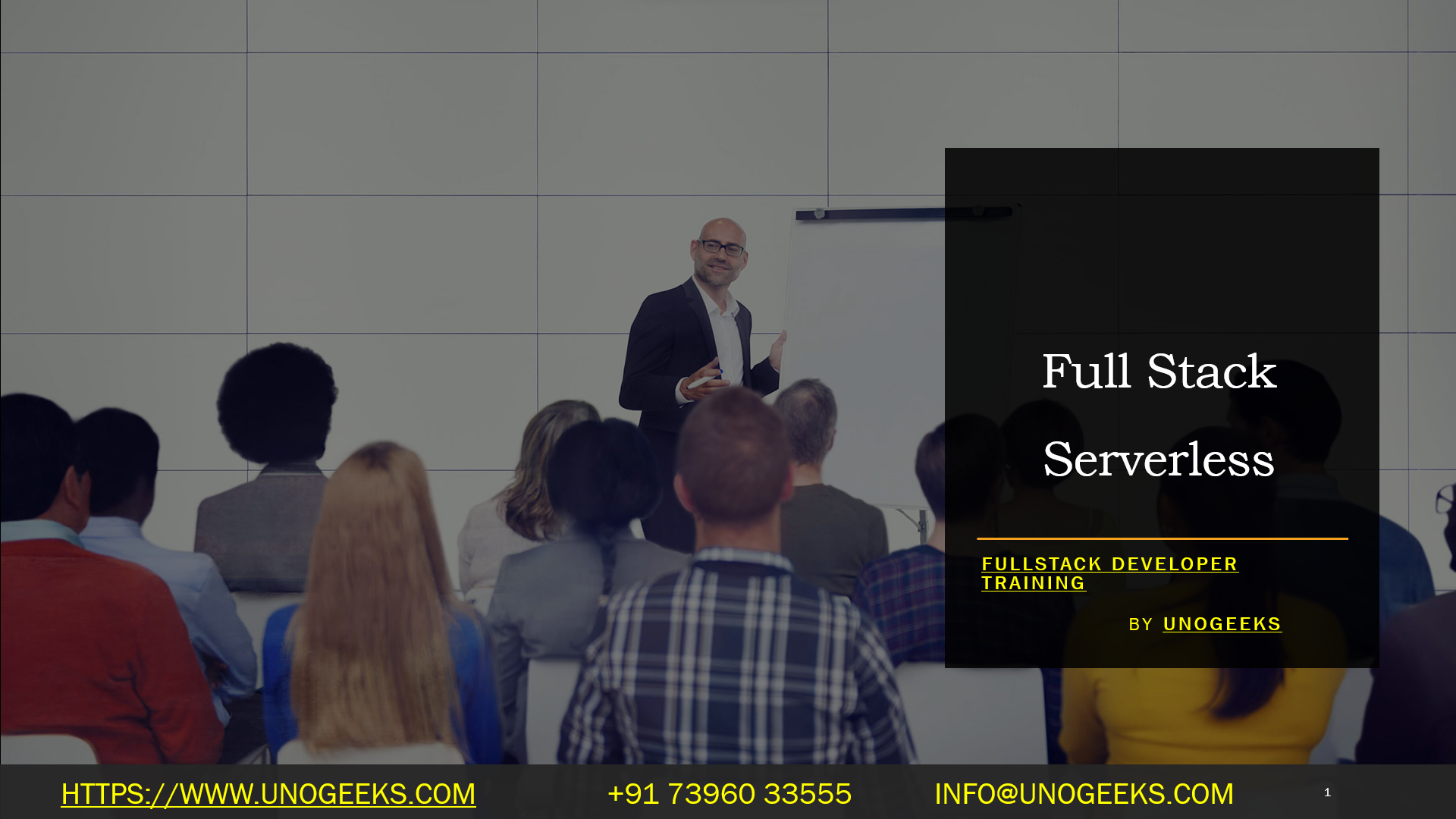Full Stack Serverless
Full Stack Serverless
Full Stack Serverless development refers to building web applications where the back-end runs on serverless computing architecture. In a serverless model, developers write and deploy code without worrying about the underlying infrastructure, as the cloud provider dynamically manages the allocation and provisioning of servers. This model can lead to increased efficiency, scalability, and cost-effectiveness.
Key Components of Full Stack Serverless Development
Front-End Development
- Front-End Frameworks/Libraries: Utilizing frameworks like React, Vue.js, or Angular to build the user interface.
- Static Site Generators: Tools like Gatsby (React-based), Next.js, or Nuxt.js (Vue-based) for generating static websites that can interact with serverless back-ends.
- Hosting Static Sites: Platforms like Netlify, Vercel, or AWS Amplify for hosting static front-end resources.
Serverless Back-End
- Cloud Functions: Writing back-end logic using cloud functions offered by platforms like AWS Lambda, Azure Functions, or Google Cloud Functions.
- API Gateway: Exposing cloud functions as RESTful APIs using services like Amazon API Gateway or Azure API Management.
- Serverless Databases: Using serverless databases like Amazon DynamoDB, Azure Cosmos DB, or Google Firestore.
- Authentication and Authorization: Implementing security using services like AWS Cognito, Firebase Authentication, or Auth0.
- Storage: Utilizing cloud storage services like Amazon S3, Azure Blob Storage, or Google Cloud Storage.
Development and Deployment
- Infrastructure as Code (IaC): Automating infrastructure provisioning using tools like AWS CloudFormation, Terraform, or the Serverless Framework.
- Continuous Integration/Continuous Deployment (CI/CD): Automating the deployment process using tools like GitHub Actions, Jenkins, or CircleCI.
- Local Development Tools: Tools like Serverless Offline or SAM CLI for local testing of serverless applications.
- Monitoring and Debugging: Using cloud-specific tools like AWS CloudWatch, Azure Monitor, or Google Stackdriver.
Benefits of Full Stack Serverless
- Scalability: Automatic scaling based on demand without the need for manual intervention.
- Cost-Effectiveness: Pay-for-use pricing models, where costs are based on the actual usage rather than pre-provisioned capacity.
- Development Speed: Faster development and deployment cycles, as there is less infrastructure management.
Challenges and Considerations
- Cold Starts: Potential latency issues due to cold starts of serverless functions.
- Vendor Lock-In: Dependency on specific cloud providers and their tools/services.
- State Management: Challenges in managing state in a stateless serverless environment.
Full Stack Developer Training Demo Day 1 Video:
Conclusion:
Unogeeks is the No.1 IT Training Institute for Full Stack Developer Training. Anyone Disagree? Please drop in a comment
You can check out our other latest blogs on Full Stack Developer Training here – Full Stack Developer Blogs
Please check out our Best In Class Full Stack Developer Training Details here – Full Stack Developer Training

———————————-
For Training inquiries:
Call/Whatsapp: +91 73960 33555
Mail us at: info@unogeeks.com
Our Website ➜ https://unogeeks.com
Follow us:
Instagram: https://www.instagram.com/unogeeks
Facebook:https://www.facebook.com/UnogeeksSoftwareTrainingInstitute
Twitter: https://twitter.com/unogeeks
